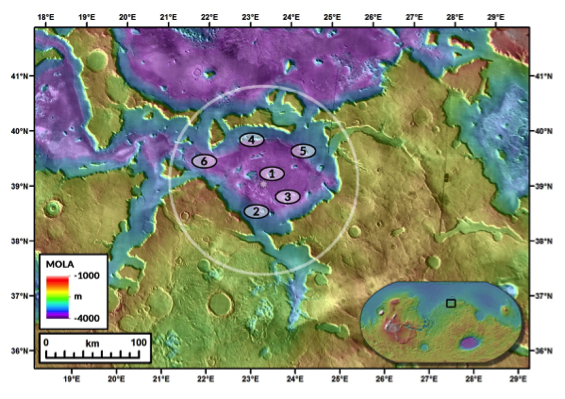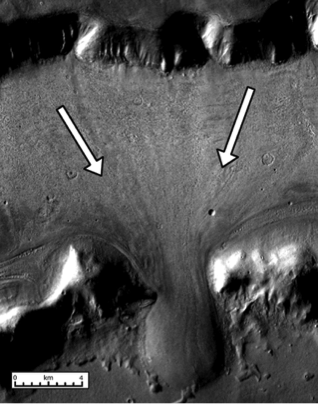PROVIDENCE, R.I. [Brown University] — This week NASA is assembling scientists from across the country in Houston to start thinking about locations on Mars that would be good candidates for human exploration. Among those gathering for the Landing Sites/Exploration Zones Workshop for Human Missions to the Surface of Mars, is a Brown geologist who has first-hand experience in planning missions to explore another world.
Shortly after receiving his Ph.D. at Brown, Jim Head took a job working on the Apollo program, helping to select landing sites on the Moon and train astronauts in lunar geology. He says the lessons of Apollo will serve NASA well in planning human exploration of Mars.
“We learned a lot about selecting sites of high scientific interest, planning traverses across those landing sites, and using scientific approaches to solving complex problems,” Head said. “We can do likewise for Mars.”
At the conference this week, Head is making the case for a region he believes has everything NASA is looking for in a human exploration site. It’s a spot known as Deuteronilus Mensae, and it could hold the key to a number of important scientific questions about the evolution of the Red Planet. It also has the resources astronauts would need to live and work safely.
“Science and survivability — that’s the coin of the realm here,” Head said.
Head and numerous colleagues and students have been studying Deuteronilus for years. Several years ago, they noticed landforms in the region that look a lot like formations on Earth that are associated with buried glacial ice. More recently, the SHARAD instrument on NASA’s Mars Reconnaissance Orbiter confirmed that deposits of buried ice were indeed present. That ice could provide an all-important water resource for human explorers.
“That’s critical,” Head said. “It would be really great not to have to take all your water with you. You would need to clear off the debris that covers it, but that debris could be used to build a shelter against the potentially intense radiation on the surface of Mars.”
Head has done extensive field research in Antarctica, where explorers use glacial deposits in much the same way.
“When we work in Antarctica, we typically don’t take water with us when we’re out in the field,” he said. “We use water from the glacier ice as we study it. We live off the land, so to speak.”

Deuteronilus contains many features of scientific interest.
There’s plenty of crucial science to be done at Deuteronilus as well. The site is close to samples of crust that date back to the earliest epoch on Mars, more than four billion years ago. Collecting and analyzing those samples could help in piecing together what the surface was like early in the planet’s history. In addition to providing water, the buried glaciers are a scientific resource. The deposits range in age from several hundred million years old to only a few million. These could provide scientists with a record of relatively recent climate shifts and atmospheric conditions on Mars.
“Deuteronilus really represents the alpha and the omega,” Head said. “It offers a chance to explore the ancient crust as well as more recent climate history.”
Jack Mustard, another Brown geologist, Head, and colleagues will also present a candidate landing site in the area of an ancient sedimentary lake delta on Mars.
Site selection for humans on Mars is in its very preliminary stages, but Head says now is the time to start bringing as many people as possible into the process. “When I answered the job ad for the Apollo program it was really exciting,” he said. “We brought lots of people together to see how we could think our way to the Moon and back. Going to Mars is going to be a tremendous challenge, but it’s going to exciting.”

